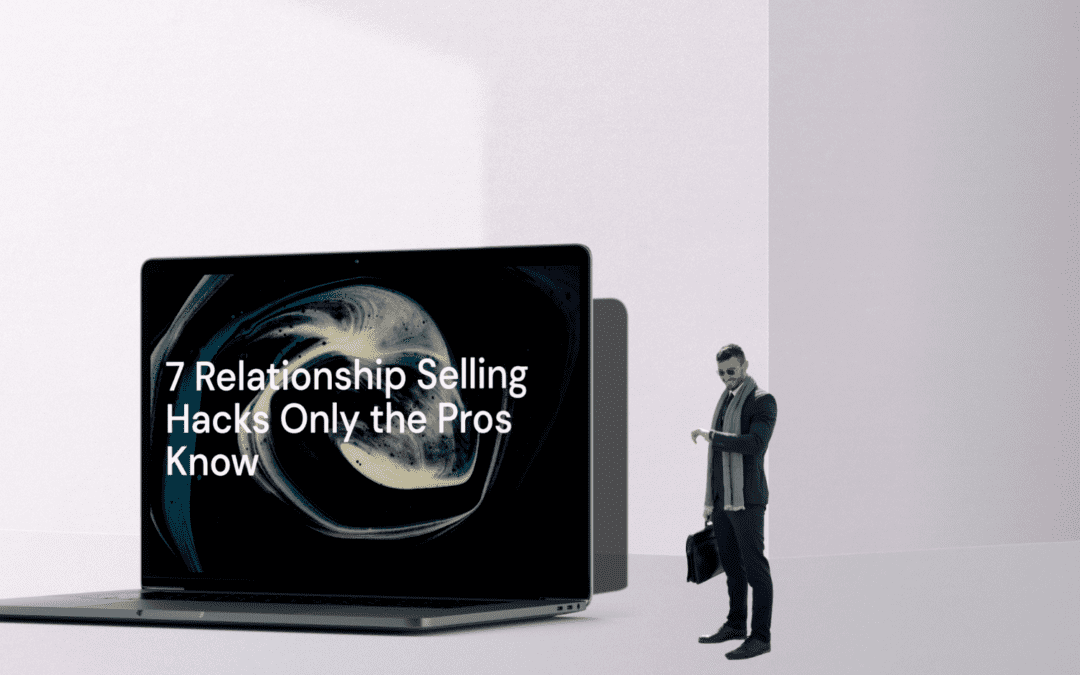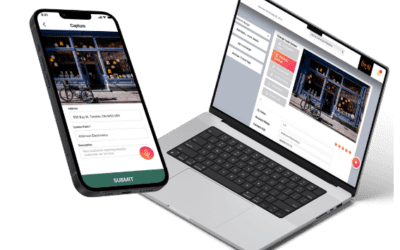Ready to get started?
Do you want to be a pro salesman? If so, you need to master the practice of relationship selling. Now more than ever before, prospects want to know that they can rely on their consultants, even in the toughest of times. Linkedin’s 2020 State of Sales Report shows that buyers are actually craving the support of their consultants. The pandemic has shown us that when the chips fall, clients need to know they can count on you, that they can call on you when they need to, and that you’ll be there for them no matter what.
Fostering this kind of relationship is tantamount to your product’s success. In a world where the next big thing pops up almost weekly, customer loyalty can make or break you. In order to gain that trust and loyalty from your customers, you need to work on your relationship selling, not just social or transactional selling.
Typically, relationship selling works exceptionally well in B2B environments because they involve longer sales cycles and products or services with higher costs, which is why it would work well for you. But when you stop to think about it, relationship selling is all around us. Think about your barber or hairstylist. How long have you been seeing them? Do you go to the same one all the time, or choose a different one every time you need a haircut?
There’s a good chance that it’s the former, and that’s because barbers and hairstylists use relationship selling to bolster their customer loyalty. When you’re going to get your haircut, it’s not just about the cut. You go to the same stylist because you trust them. Often, you’ll spend the time talking about your life and theirs, and you’ll feel more like you’re in a friendship situation rather than a consumer-seller relationship. You trust that your hairstylist knows your hair and the kind of cuts you like or the products that work best for you. That’s because they’ve taken the time to learn about you and your hair. This is relationship selling.
Back in 2012, when Starbucks employees started to write customers’ names on their cups, it was because they knew of the value of relationship selling. Making their customers feel less like a number or face in the crowd, and more like an individual human being with a name and face, is one of the reasons why Starbucks customers are so loyal.
What is Relationship Selling?
Relationship selling is a sales technique in which the salesperson – you – fosters and encourages a relationship with their customers that’s focused on interpersonal relationships, not just transactional value.
While anyone selling anything can engage in relationship selling, It’s most prominently used in businesses where customer loyalty is key to continuing sales, or where long sales cycles and higher cash values are inherent.
It’s the process of creating a friendly environment, where positive personal relationships can grow. Relationship selling increases customer loyalty and continued sales of a business’s products or services. Areas of the business that rely on relationship selling include real estate agents, salons, hotels and destinations, insurance agencies, software companies, and private instructors, among many others. Any company or business that thrives on customer loyalty and repeat or continuous customers will be a pro at relationship selling.
The Importance of Relationship Selling
As has already been mentioned, there are numerous reasons why relationship selling is important. Your customers want to know that after the initial transaction is done, you’ll still be around if they need you. With so much business being conducted online these days, it’s become even more important for you to form relationships with your customers. Ensuring that they know they’re more than just X amount of money to you builds trust, which, in turn, builds loyalty. And customer trust and loyalty drive sales.
With so many products and services on the market rivaling one another, customers won’t spend their hard-earned money on a company or brand that they don’t know or feel they can’t trust. Getting to know your customers personally – not just when it has to do with their company or a sale – will win them over quicker than any sales pitch.

Relationship selling also has the benefit of seeing higher ROIs than transactional marketing. This is due to the fact that getting new customers tends to be more expensive than retaining current ones. A customer is far more likely to purchase more of a business’s products and to support a company they’re loyal to when new products are released if they have a relationship with them. Relationship selling also increases the likelihood that a customer will return to a business or store.
You add value to yourself and your product when you engage in a personal relationship with your customers. Not only will they realize that they’re not just a number to you, to them, but you’ll also be more than someone trying to sell them something. You’ll be a trusted advisor. Someone they know they can come to no matter what the problem is.
Take the example laid out on TrustedAdvisory, where Alex, who leads a private wealth management firm, talks about his relationship with one of his clients. It’s not only about managing their money, Alex says. He spends time with his clients, gets to know everything about them and their families. He knows if someone’s getting a divorce, or has fallen ill, or is having another child. He relates the story where he spent an hour on the phone with a client’s 19-year-old daughter, discussing with her how to manage the $3,000 that she had. The daughter wasn’t Alex’s client, and he had no financial incentive to help her. But he did because it delighted her father to know that his teenage daughter was already getting sound financial advice at such a young age from someone he trusted. The small thing just managed to strengthen Alex’s personal and business relationship with her father, his actual client.

Transactional Versus Relationship Selling
So even after getting this far, you still may be sitting there asking yourself about the difference between transactional and relationship selling. The truth is, they do have some things in common, but they also have some glaring differences.
Both transactional and relationship selling have the end game of making a sale. The differences between the two arise when it comes to going about making that sale.
Transactional marketing is focused solely on the sale and once it’s finalized, the relationship essentially ends. Salespeople focused on transactional selling tend to send out impersonal, mass-marketed emails and promotions. Those engaged in relationship selling opt for sending out personalized marketing and promotions. It’s the difference between receiving a marketing email with your personal name at the top, but the body is mass-marketed to hundreds of other people, and receiving one where the body of the email is also personalized to you and only you. Which one are you more likely to respond to, robo-emails or personal ones?
According to Mark Sanborn on his website, there are nine key differences between transactional marketing and relationship selling. These include differences like transactional sellers are more professional, whereas relationship sellers are friendlier. Transactional sellers tend to have their own self-interest in mind, while relationship sellers think about what’s best both for their customers and themselves. And relationship selling entails thinking about what you give your customers, as opposed to the what-you-get mindset of transactional marketing.
Generally, it depends not only on what you’re selling but also on how you want to sell it that determines whether you should be a transactional marketer or engage in relationship selling.
Relationship Selling Process Hacks:
Now that you’ve decided that relationship selling is best practice for you, let’s look at the relationship selling process. Relationship selling pros rely on seven factors to help them achieve success. If you follow these tips, you, too, can be a relationship selling pro.

1. Research your prospect and prepare ahead of time
If you want to make a good first impression on your prospect, it’s important to make sure you know who you’re meeting. You need to research everything you can, not just about their company, but about them as individuals as well. You’re building a long-term relationship with your prospect or client, so the better you know them, the quicker you’ll be able to anticipate their needs and their wants. This is probably one of the most important factors to successful relationship selling. If you don’t know your clients or prospects well enough, they’ll feel it. If you’re reading off cue cards about them on sales calls, they’ll hear it. You won’t be building any trust with clients if you don’t know them. So research, research, research.
2. Listen more than you speak
We’ve touched on this before and probably will again because it’s that important. Active listening shows empathy. Empathy encourages trust. Trust makes sales. As noted in the first point, you must research your prospect prior to engaging with them, but research can only get you so far. This is why you must listen to what they say, but also to what they don’t say. Active listening is key to understanding your client and their pain points, and the more you listen, the higher chance you have of closing the deal. Studies show that salespeople who spend less time talking and more time listening have higher closing rates. One of the reasons for this is that when you steamroll through a conversation and spend more time talking, clients have a harder time trusting you. Why would they want to be a repeat customer when you’re too busy pitching to actually hear them?

3. Give targeted advice to your prospect’s goals
When you pay attention to what your prospect is saying to you, you can give them better advice. Target advising is a great way to once again build that client’s trust. If they know that you’ve been paying attention and have discovered ways to help them, specifically, they will trust in you and your product or service. So be sure that through your research and practicing active listening, you’re able to come up with some targeted advice to help them achieve their goals. If during a conversation, you’ve heard them mention that X is a massive pain point, you can use that to suggest Y to help with their problem. Pay attention, and take notes if necessary.

4. Follow up by providing valuable information
We know that we seem to be saying the same things in all of these points, but that’s because they all tie in together. It’s difficult to master one without also mastering the others. Providing valuable information to your clients or prospects will, again, build that trust that consumers and companies are so desperately seeking these days. After your initial phone call, do some more research and take note of things you think would be valuable for them. You can follow up about this information in an email or by phone, but phone calls are more personal. So if possible, always opt for a call rather than an email.
5. Be honest and transparent about what you can and cannot do
If your client or prospect is asking for or needs something that you are unable to provide, do not promise them that you can. Breaking the trust of a client is the last thing you want to do, so it’s important that you’re always transparent with them.

6. Be patient, reliable, and genuine (pre-and-post sale)
Reliability is one of the main things clients and prospects are looking for. They want to know that you are someone they can count on and call on at any time, even after the sale is finalized. As the saying goes, patience is a virtue. Remember, these companies are likely spending a lot of money on your product or service. Trying to rush them through a sale will get them nowhere. Being patient as they ask questions and debate whether to purchase will let them know that you understand what a big undertaking is. And, of course, be honest. Don’t let them think they’re talking to a fake persona who’s just trying to sell them something. Yes, you want that sale, but you’re also here for them before and after it.
7. Know when to walk away gracefully
Be persistent, but don’t be a pest. If they’ve made it painfully clear that they are not interested, do not continue to pester them. Not only will they not buy your product or service, but they will also likely talk to others in their line of business and advise them not to buy from you. Knowing when to walk away gracefully will leave the prospect with respect for you and your company. Maybe they’re not in the market for your product now, but if you’ve made a good impression and walked away when you should, they might call you back when they’re in need.
How we do it at Wingmate…
Relationship selling is a great marketing tactic to not only sell your product or service but also to retain customers. Prospects are looking for long-term relationships these days, and are far more likely to return to a company that they trust and have a good relationship with. If you follow these tips and tricks, you’ll be well on your way to becoming a relationship selling pro.
Other Articles
Enhancing customer satisfaction with a mobile CRM App
Ready to get started?Are you looking for a way to enhance customer satisfaction in your sales process? Mobile CRM (Customer Relationship Management) apps are the perfect tool to help sales reps stay on top of their customer interactions and keep track of customer...
Lead Management Process
Ready to get started?The lead management process is an important part of any business. It is a method that bridges the gap between marketing and sales which increases the chances of turning prospects into customers and ultimately results in more revenue for your...






